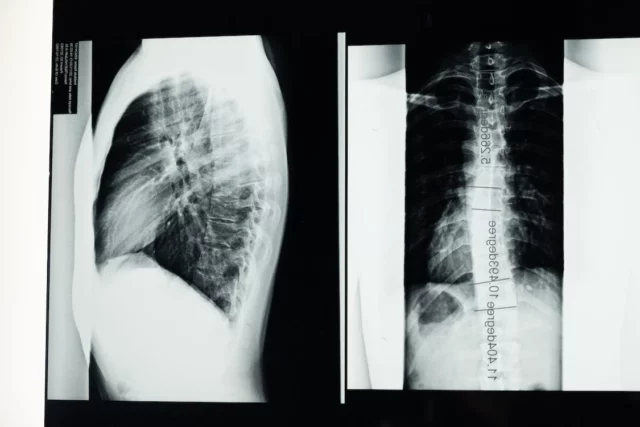Amputation and mutilation?
Austin Personal Injury Attorney Works for Your Benefits
The Law Offices of Aaron Allison have decades of experience with medical malpractice cases in Texas. We understand that victims of wrongful medical amputation and mutilation need aggressive, professional representation to understand their rights. Our Austin attorney has been fighting and winning amputation medical malpractice claims for decades, and we offer free consultations to evaluate your malpractice case.
Types of Medical Malpractice that May Cause Amputation or Mutilation
Amputation, mutilation, and disfigurement are usually the result of accident or trauma and are often associated with workplace injuries. However, these devastating injuries are sometimes unnecessary, and they may be amputations from medical negligence. The three most common ways that medical malpractice or negligence can cause unnecessary amputation and mutilation are:
- Negligence in diagnosis. A misdiagnosis or delayed diagnosis can allow disease or illness to progress without the right treatment. Failure to correctly diagnose and quickly treat common conditions like diabetes, peripheral arterial disease, and certain forms of cancer can lead to mutilation or amputation that would have been unnecessary if the underlying condition had been correctly diagnosed and treated on time.
- Hospital or surgical infection. While hospitals and medical facilities are supposed to be safe environments for care and recovery, they are often also environments with a high number of germs and bacteria that can cause infection. Collectively, these types of diseases are called “healthcare-acquired infections”, or HCAIs. The CDC estimates that about 4 percent of hospitalized patients, and about 19.5 percent of patients in an ICU, acquire an HCAI during their care. Infections like meningitis and MRSA can cause severe blood poisoning that may necessitate amputation, or even be fatal. In the US, HCAIs cost $9.8 billion in medical costs every year, and half of those infections might be preventable.
- WSPEs. Perhaps the most chilling cause of unnecessary amputation or mutilation is surgical errors. Surgeons may perform an operation on the incorrect body part, or even on the incorrect patient. These are referred to as “wrong-site, wrong-procedure, and wrong-patient errors”, or WSPEs. While it is difficult to assess the exact frequency of WSPEs across all types of surgery, they are estimated to occur 1300-2700 times a year, with greater frequency in orthopedic and dental surgery. WSPEs are highly preventable since they typically occur in a scheduled surgery setting, where both the patient and the doctor have agreed on the treatment, and there has been informed consent. WSPEs are “never events”: there ought to be simply no excuse for an operation to take place on the wrong person or the wrong body part.
Signs that an Amputation or Mutilation Might be Due to Medical Malpractice
Mutilation malpractice can be extremely difficult to prove. Not all medical treatments are successful, and some have unintended side effects that may worsen the initial complaint. Simply having an unsuccessful treatment, or experiencing unwanted side effects, is not medical malpractice. Here are some of the signs of amputations from medical negligence:
- A condition took a long time to diagnose despite repeated visits. Many people have the experience of repeatedly seeing a doctor for a complaint, only to receive inadequate treatment or no treatment at all. If a doctor fails to perform the right tests, fails to refer the patient to a specialist, or fails to prescribe the right treatment, and the delay results in amputation or mutilation, it could be medical malpractice.
- Lack of informed consent. If a patient undergoes medical treatment or procedures without fully understanding the possible consequences and side effects, it is called lack of “informed consent”, and might be malpractice. Patients and their caregivers have a right to:
- Disclosure. The patient needs to have all the relevant information about the course of treatment, including potential outcomes and side effects. The patient should have the opportunity to have all their questions answered before receiving treatment.
- Capacity. The patient needs to be able to understand the information provided. This may require the doctor to communicate in simpler terms, use a language translator when necessary, or communicate with the patient’s caretaker when the patient has reduced capacity.
- Voluntariness. The patient needs to consent freely to the treatment, understanding the risks and benefits, without undue pressure, coercion, or manipulation
- Amputation or mutilation was reasonably foreseeable. While it is not possible for a doctor to anticipate every possible outcome of treatment, many potential outcomes are foreseeable with the proper care. If an amputation or mutilation could have been avoided by a better understanding of the patient’s medical history, a more thorough review of their chart or test results, or greater care taken during the course of treatment, it may be a case of medical malpractice.
Not every amputation is due to medical error, and not every error meets the standard for malpractice. It is best to discuss your situation and concerns with an attorney to better understand your potential amputation medical malpractice claims.
Suing for Wrongful Amputation
If you or a loved one have been the victim of wrongful amputation or mutilation malpractice in Austin, it is important to act quickly. Texas has a statute of limitations that limits the amount of time you have to file a claim. Amputation medical malpractice claims can take a long time to settle, and acting quickly can lead to a faster decision or settlement. You may be entitled to legal recovery, including:
- Medical expenses
- Lost income
- Pain and suffering
If you are a victim of amputation or mutilation malpractice, contact a qualified attorney for a consultation.
How Can Aaron Allison Help?
At Aaron Allison, we have been helping victims of medical malpractice recover their losses since 1978. Our experienced Austin malpractice attorney knows your rights and can help you understand your legal options. We offer free consultations and work on a contingency basis, so you owe no legal fees up front. Contact us today for more information about medical malpractice claims in Texas.
Free Case Review
Not Seeing What You’re Looking For? We Also Help With:
- Workers Compensation
- Construction Accidents
- Uninsured Employers
- Motor Vehicle Accidents
- Personal Injury
- Slip and Fall Accidents
- Back and Spinal Cord Injuries
- Spinal Injury at Work
- Dog Bites
- Head and Brain Injuries
- Injuries to Children
- Medical Malpractice
- Premises Liability
- Product Liability
- Wrongful Death
Back & Spinal Cord Injury News
Austin University Helps Heuro Patients Walk Again
Paralysis is a devastating condition that is often permanent. It is a common occurrence after serious spinal cord injuries such as broken or …
What Others Say About Aaron Allison
“I looked at several attorney’s for my husband’s case, and Aaron looks like he was the best one. He was the best Worker’s Comp attorney in our area of Texas. So, we called and made an appointment for an initial visit. Once we talked to him we got that he knows his job. Plus he’s very nice and very personable. We could tell that right away.”
— Mrs. Mario Caballero, Austin, Texas






